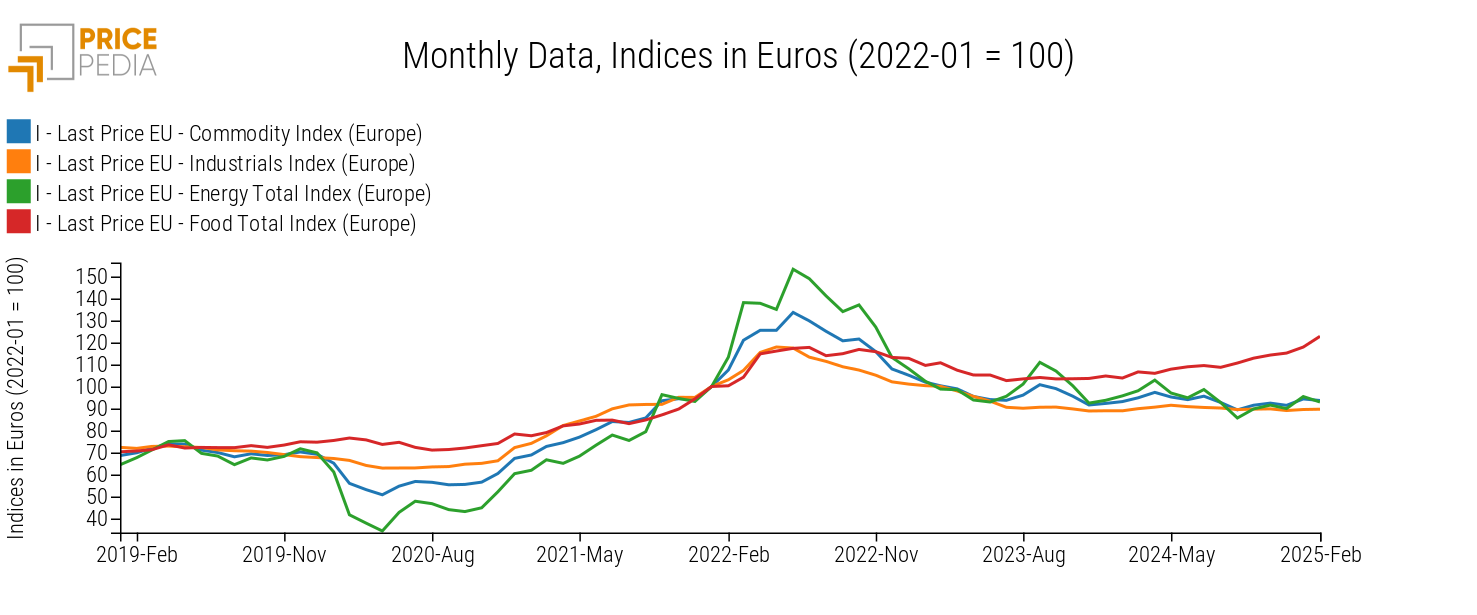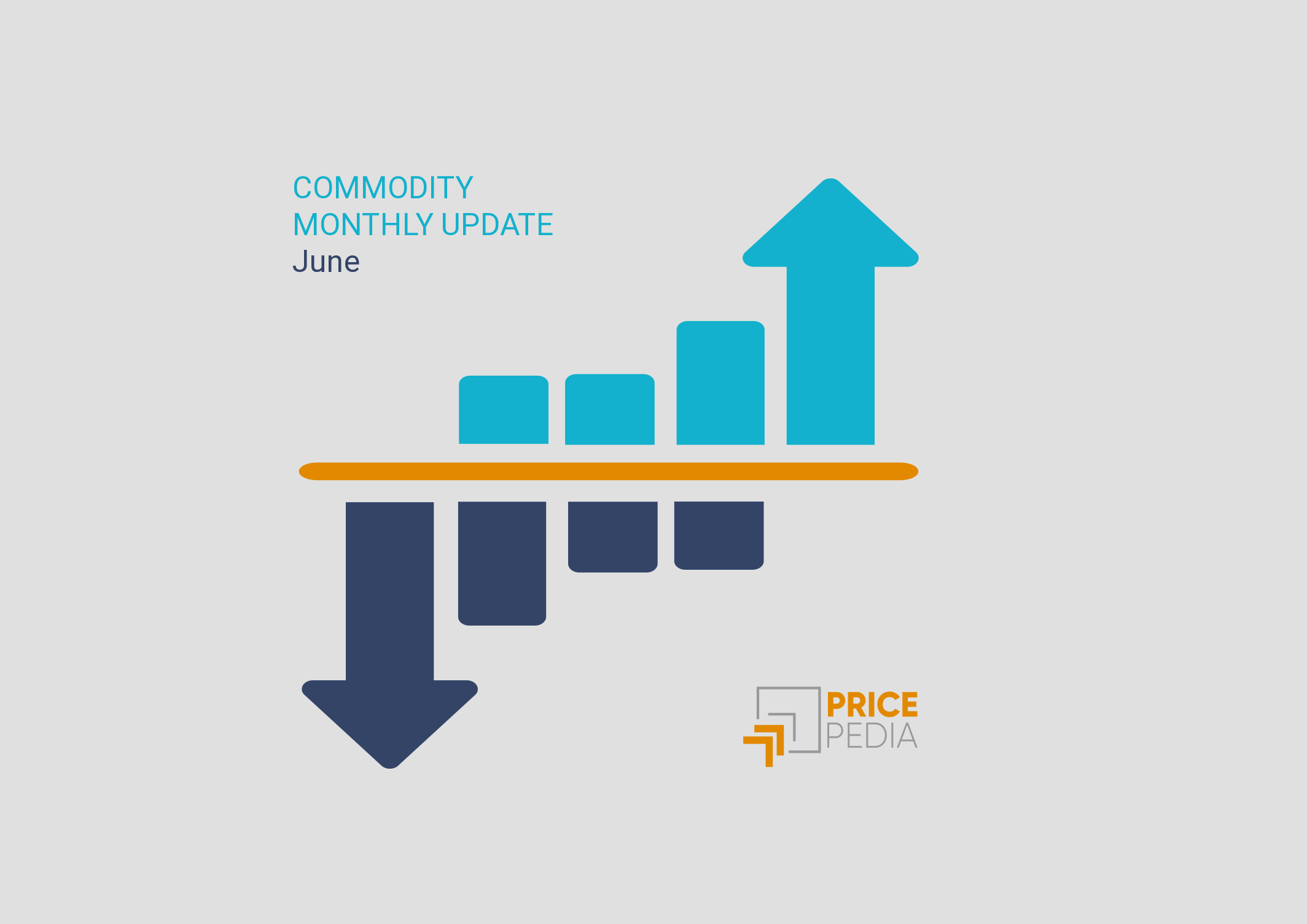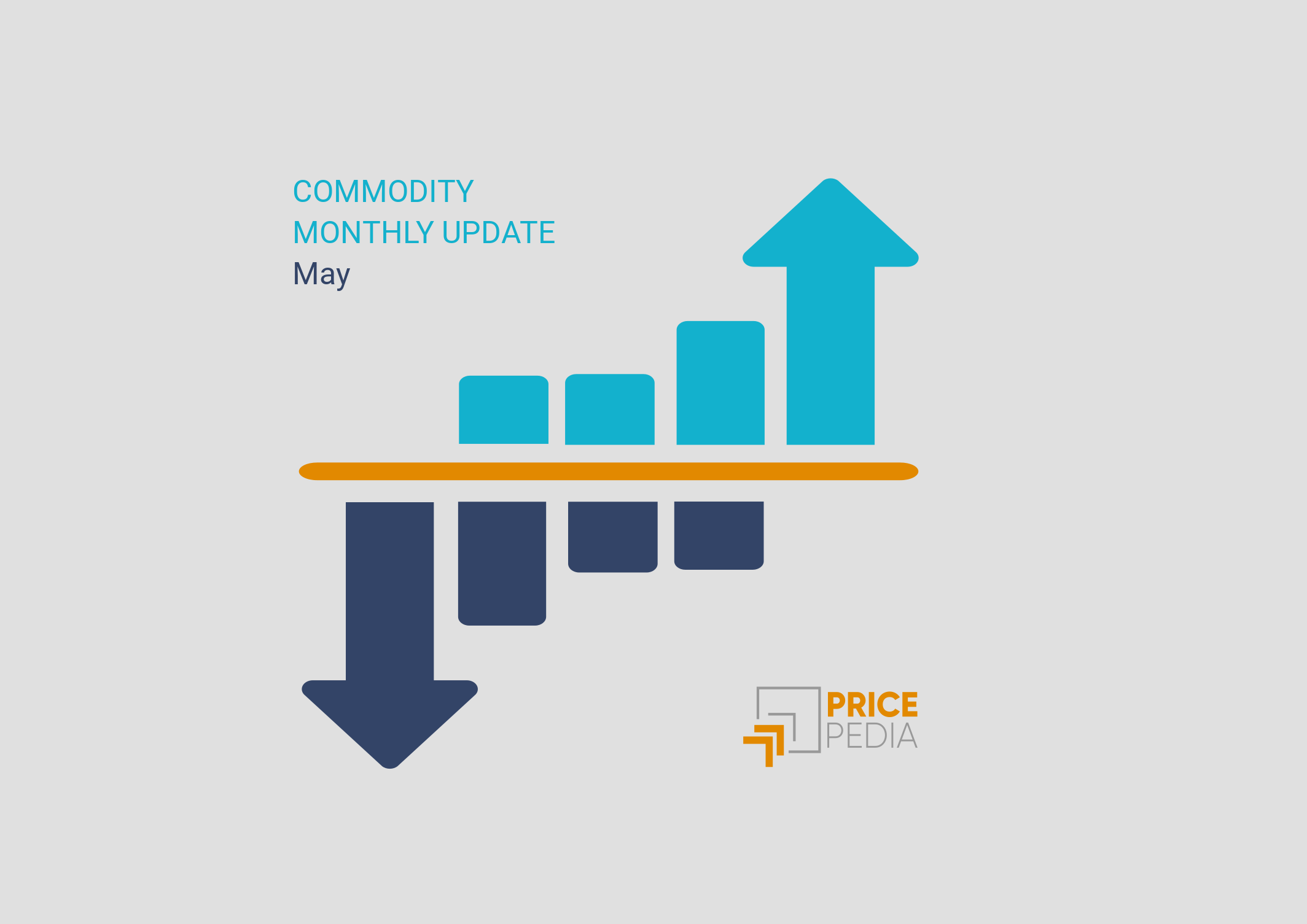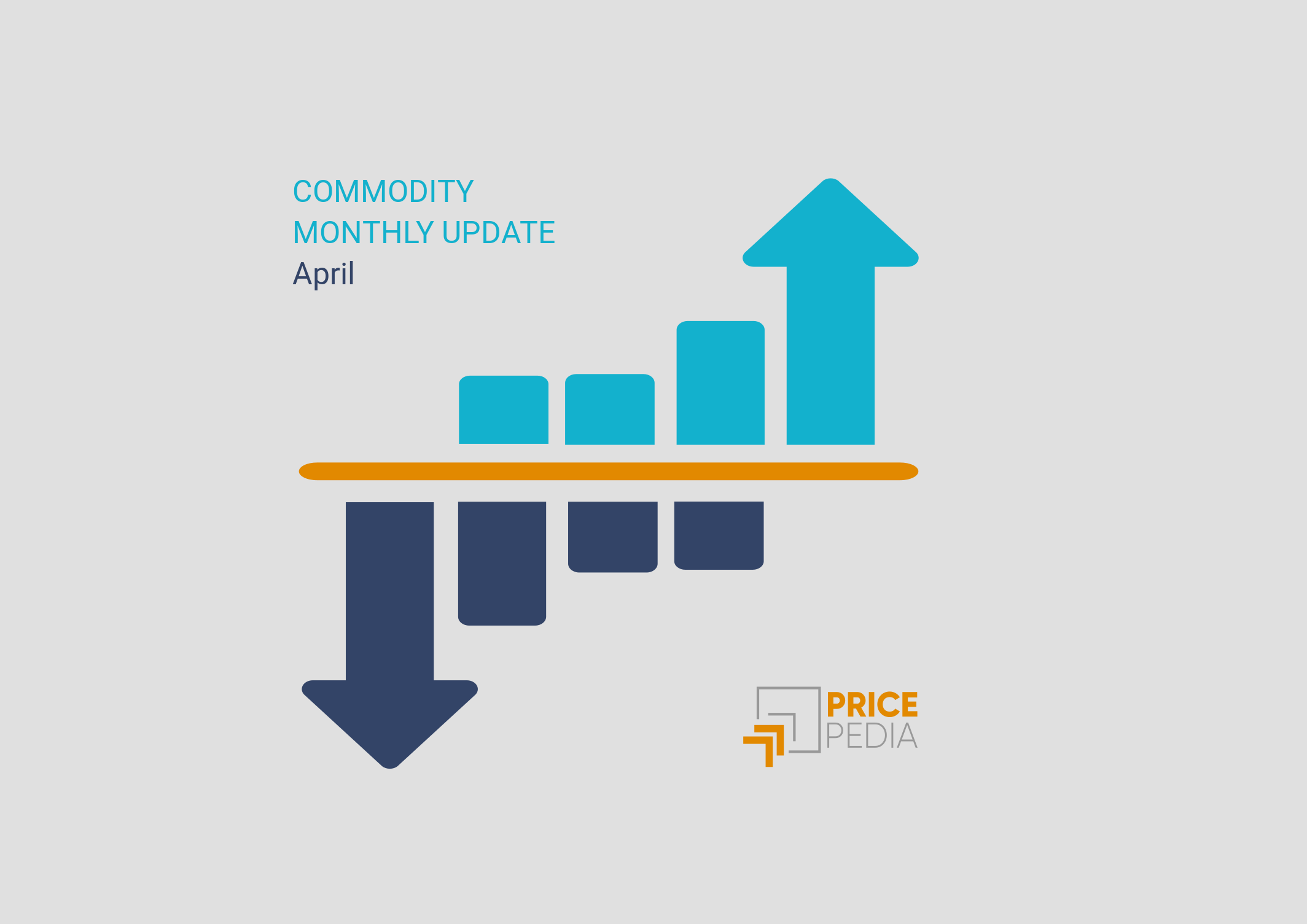Monthly commodity prices update for February 2025
Diverging price dynamics behind the apparent calm
Published by Pasquale Marzano. .
Last Price Global Economic TrendsThe monthly update of PricePedia commodity prices for February 2025 has been published. Considering the Commodity[1] Index, in February 2025, prices decreased by -2.6% compared to January 2025, remaining at levels that have been essentially stable since July 2023.
The following chart shows the price trends in euros for raw materials in Europe across the main PricePedia aggregates: Commodity, Industrials[2], Energy, and Food, indexed to 100 at their respective January 2022 levels.

The average euro prices of food products reached a new historical high in February, rising by more than +4% compared to the previous month, driven by trends in tropical goods and some vegetable oils, such as crude palm kernel oils.
In the same period, energy products prices overall declined by -2.6%, with the exception of natural gas, which has been under pressure since December due to higher seasonal consumption and a sharper stock reduction compared to the previous two winter seasons, following the announced halt of Russian gas transit via Ukraine (see the in-depth analysis Determinants of European gas price at 50 euros/MWh). In February, natural gas prices increased by over +4% on both the financial and physical markets.
Regarding industrial commodities, aggregate prices continue to fluctuate around the average levels of July 2023 with minimal deviations. However, the overall flat price trend is an average of highly heterogeneous price movements, which show relatively high intensities at the individual commodity family level.
Do you want to stay up-to-date on commodity market trends?
Sign up for PricePedia newsletter: it's free!
The following table presents the PricePedia indexes for commodity families that, on average in 2025, have shown significant absolute variations compared to the 2024 average values.
Table 1: 2025/2024 (%) Variation Rates of Aggregated PricePedia Indices in Euros
| 2025* | |
|---|---|
| I-Last Price EU-Tropical Products Index (Europe) | +38.79 |
| I-Last Price EU-Common Precious Metals Index (Europe) | +20.34 |
| I-Last Price EU-Elastomers and Rubber Index (Europe) | +12.88 |
| I-Last Price EU-Nitrogen compounds Index (Europe) | +10.95 |
| I-Last Price EU-Vitamins Index (Europe) | +9.97 |
| I-Last Price EU-Coal Index (Europe) | −10.08 |
| I-Last Price EU-Linen Index (Europe) | −16.46 |
Among commodity families, tropical products recorded the highest growth, exceeding +38% compared to 2024 average values. Common precious metals (gold and silver) also showed a strong increase of +20%.
Among core industrial commodities, significant increases were also observed for Elastomers and Rubber (+12.9%) and Nitrogen Compounds (+11%), driven respectively by the price hikes of Natural rubber (TSNR) (+31%) and Anhydrous ammonia (+30%). The latter was particularly influenced by the rising cost of natural gas, which increased by over +20% during the same period.
Additionally, the prices of Vitamins rose, showing an aggregate growth of +10% compared to 2024 values.
Conversely, Coal prices recorded an average decline of -10%. More pronounced was the drop in Flax prices (-16.5%), reversing the growth trend seen in 2023-2024, which was caused by a reduction in the supply of raw flax amid increasing demand (see Increasingly expensive flax in Europe).
1. The PricePedia Commodity index is the aggregation of Industrials, Food and Energy indices.
2. The PricePedia Industrials index is the aggregation of indices related to the following categories: Ferrous Metals, Non-Ferrous Metals, Wood and Paper, Pharmaceutical Chemicals, Chemicals: Specialty, Organic Chemicals, Inorganic Chemicals, Plastics and Elastomers, and Textile Fibers.


